Loch Ness – Searching for Nessie
This is the sixteenth post in my series on the inaugural Medieval Britain tour by Canadian military travel experts Liberation Tours that took place in July, 2018. The purpose of these posts is to let potential guests on future trips know exactly what they can expect and hopefully convince as many as possible that this is a trip that should not be missed. Although I receive no renumeration or discounts from Liberation Tours for writing these posts, I make no bones about the fact that the team of John Cannon, Phil Craig and Mark Zuehlke have become steadfast friends. I also think they do a fantastic job on preparing tours like Medieval Britain: Castles, Cannons and Crowns that are unique in the field. OK, now that you know about my biased point of view, let’s go to Loch Ness.
We started the day with a visit to the Culloden Moor battlefield site where the conditions were not dissimilar to the day Bonnie Prince Charlie got his comeuppance – drizzly, cold and foggy. Fortunately, the weather has improved and we are now headed back to Inverness and will take the A82 all the way down the northern side of the most famous lake in Scotland if not all of Europe – fabled Loch Ness.
Loch Ness
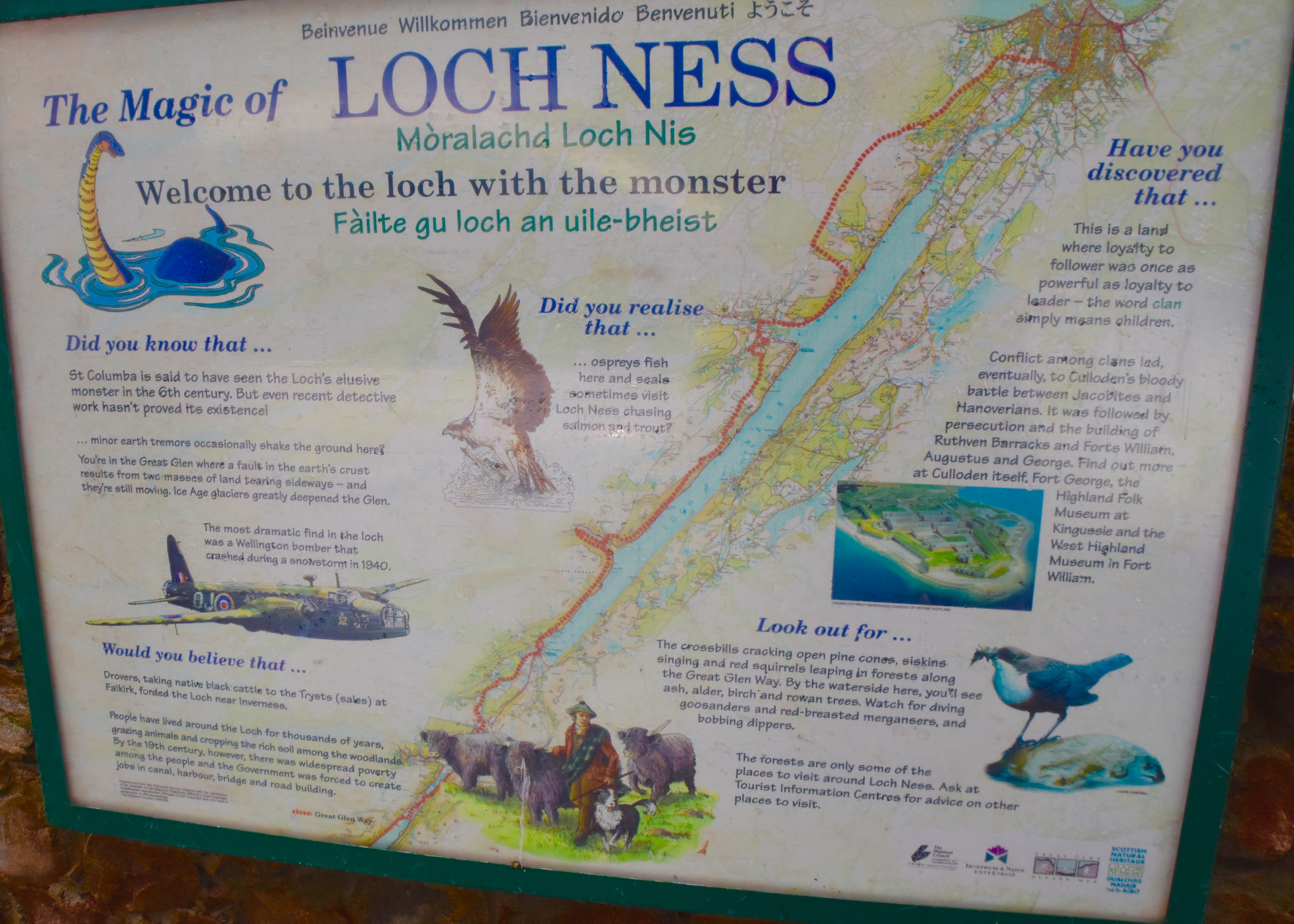
Loch Ness is a 37 km. (23 miles) gash that cuts across the Great Glen from just outside Inverness in the north to Fort Augustus in the south. From there it is linked to Loch Oich and the Irish Sea by the Caledonian Canal. While Loch Lomond is bigger in area, Loch Ness has a much greater volume of water due to its tremendous depth of over 230 metres (750 feet). In fact, it contains more water than all the lakes of England and Wales combined. It is this great depth that given plausibility to the idea that there could be a cryptozoological creature lurking deep in its waters, only to surface when no one has a decent camera ready. The above map shows the route we are taking outlined in red.
Stopping at a turnout we get our first good look at Loch Ness and it’s pretty impressive. Unfortunately, the monster chose not to photo bomb us in this picture, but note the cluster of sailboats in the distance.
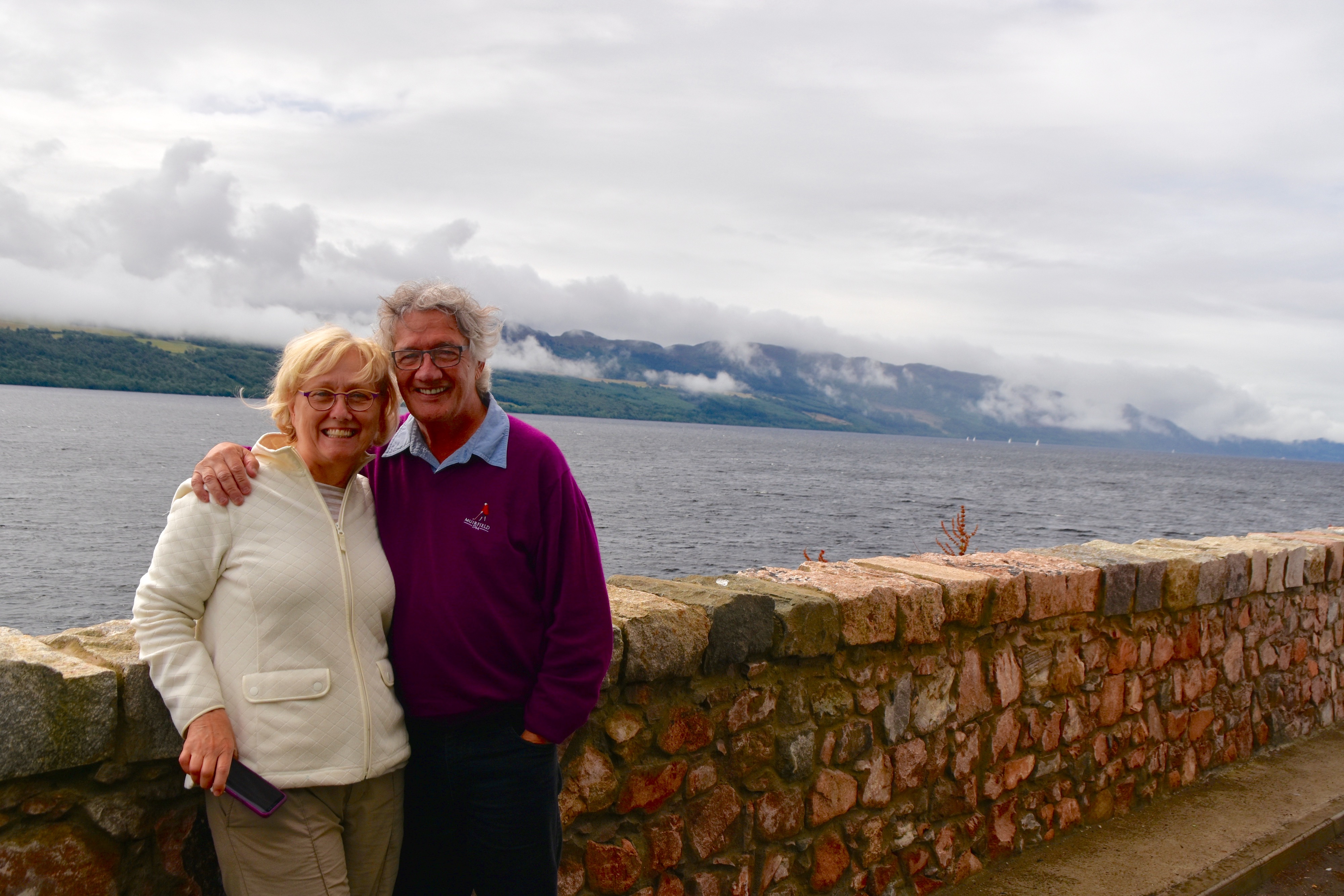
Nessie – the Legend of the Loch Ness Monster
Stories of a strange creature inhabiting the Loch Ness area first surfaced way back in the 6th century when St. Columba came across a man being buried who was apparently mauled to death by some underwater beast, or at least that’s what the locals claimed. The strange thing was that this incident did not happen in the loch, but rather the River Ness. However, it was the building of the A82 in the 1930’s that really got the sightings coming at a steady pace. The explanation was that up until then Loch Ness was relatively remote, but once motor traffic started along the same road we are now traversing things got a bit crazy. That seems a bit of a stretch since the Caledonian Canal had been allowing boats to traverse the loch with ease since 1822.
In any event, the 1930’s brought a spate of sightings starting with George Spicer who claimed he saw a giant creature cross the road in front of him and disappear into the loch. There were a few other land based sightings that followed, but these seem to have died out and every alleged photograph of Nessie, which the monster was named in the 1940’s, has been of a creature in the water. The most famous photograph was taken in 1934, by a surgeon from the shore of the lake and I doubt that there are many people who haven’t seen it before.
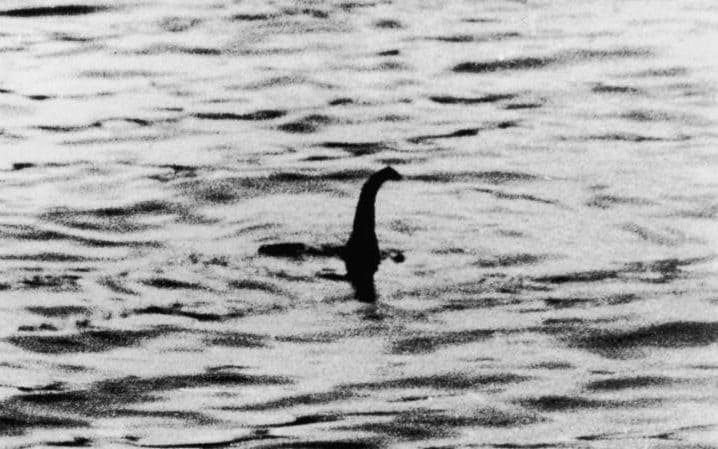
This photo was taken as the best evidence that Nessie existed by believers up until the 1994 when it was revealed to have been created from a toy submarine and putty as a practical joke. Still that doesn’t stop the search for the elusive beast from continuing and although I am a sceptic to the nth degree, I’ll will be keeping my eyes open as we head for Fort Augustus.
Urquhart Castle
Undoubtedly the most famous sight on the shores of Loch Ness is the ruins of Urquhart Castle which stood on a promontory jutting out into the lake for over a thousand years, in one form or another. Ultimately deliberately destroyed in 1692 after the first Jacobite rebellion, it had been home first to Picts and then passed back and forth between the Scots and English many times including ownership stints by Edward I and Robert the Bruce. It is now one of the most recognizable romantic ruins in Great Britain and unfortunately, absolutely overrun with tourists. There had to be twenty tour buses already in the large parking lot when we pulled in. This was not a scheduled stop on the Medieval Britain tour because I presume when John and Phil scouted out the trip they realized that Urquhart Castle was just too overcrowded to really be enjoyable. However, we did have a photo op.
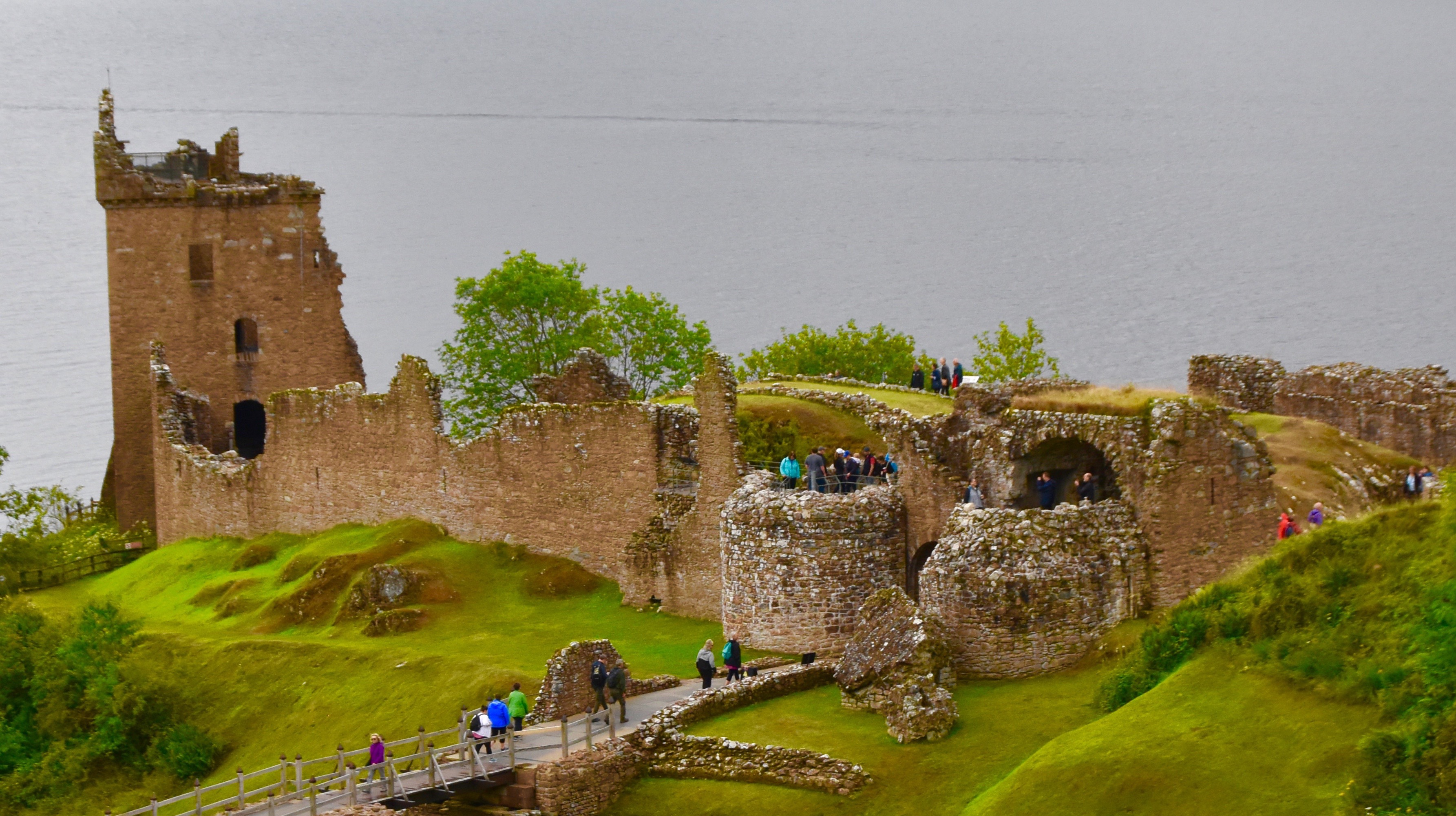
That’s looking down at the ruins from the pathway that leads to it from the parking lot. Unfortunately, I should have been looking up rather than down. You can see a clear wake line in the water just above the castle which could only have been made by you know what. Missed it by that much!
Fort Augustus & the Caledonia Canal
Loch Ness ends at the small village of Fort Augustus which was originally a fortification built by General George Wade who was one of the great military engineers of the 18th century. After the Jacobite uprising of 1715 he was tasked with building a series of roads in Scotland that could be used to move troops around quickly in the event of future disturbances. These roads and particularly the stone bridges were so well built that many are still in use today. This is a Wade bridge on the road be built connecting connecting various garrisons in the highlands. Ironically the Jacobites of the 1745 rebellion used these same roads to move quickly upon Inverness and Fort Augustus only a month before Culloden.
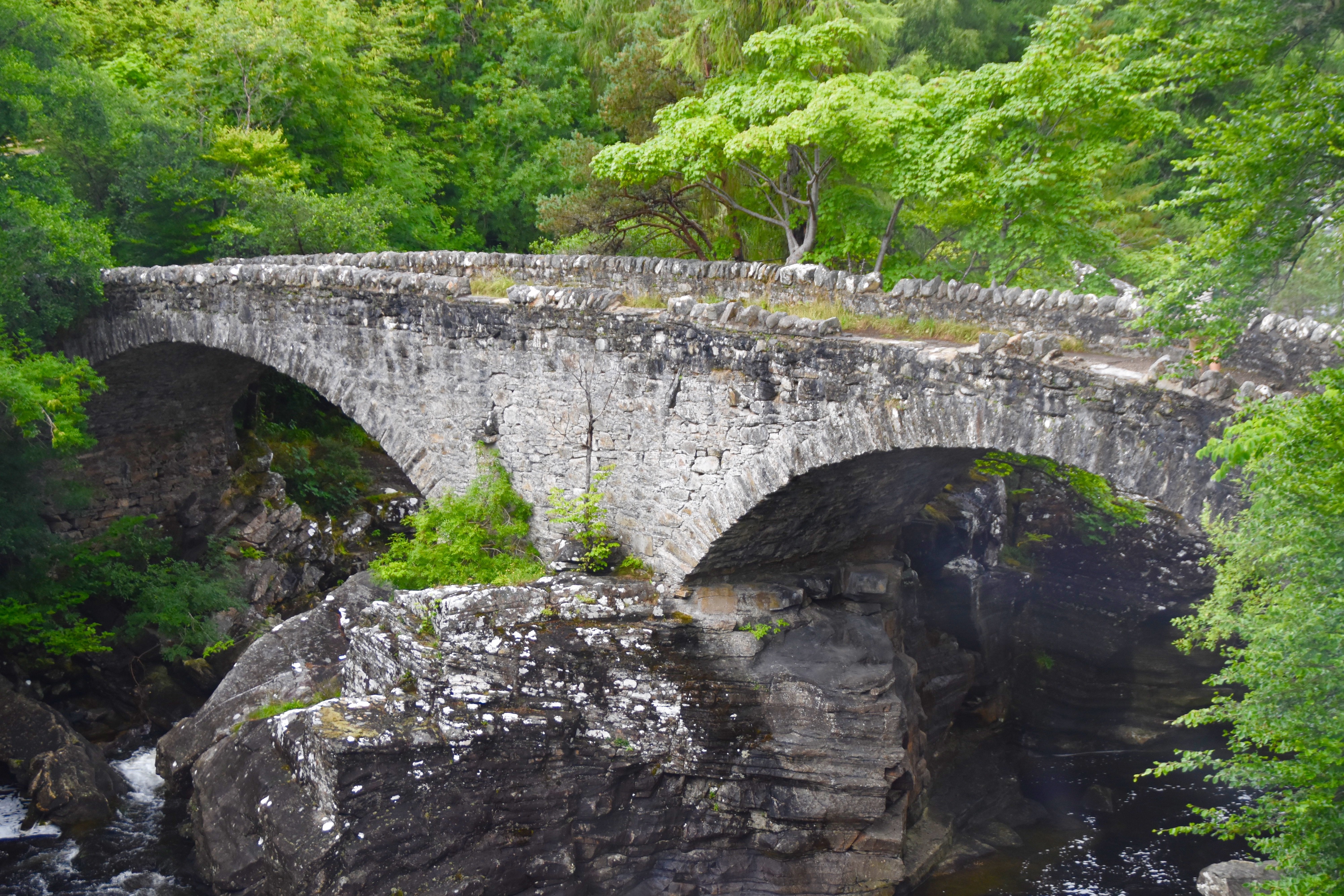
Today, Fort Augustus is a tourist town relying upon the aura of Loch Ness to draw in patrons to its many restaurants and gift shops. It also lies at the end of the Caledonian Canal, the brainchild of another great engineer, Thomas Telford aka The Colossus of Roads. It opened in 1822 and eliminated the need for ships to traverse the dangerous passage across the top of Scotland to get from the Irish Sea to the North Sea. It is still in use as a very popular destination for recreational boaters. There are a series of locks at Fort Augustus that attract spectators watching the raising and lowering of pleasure craft and the occasional fishing boat.
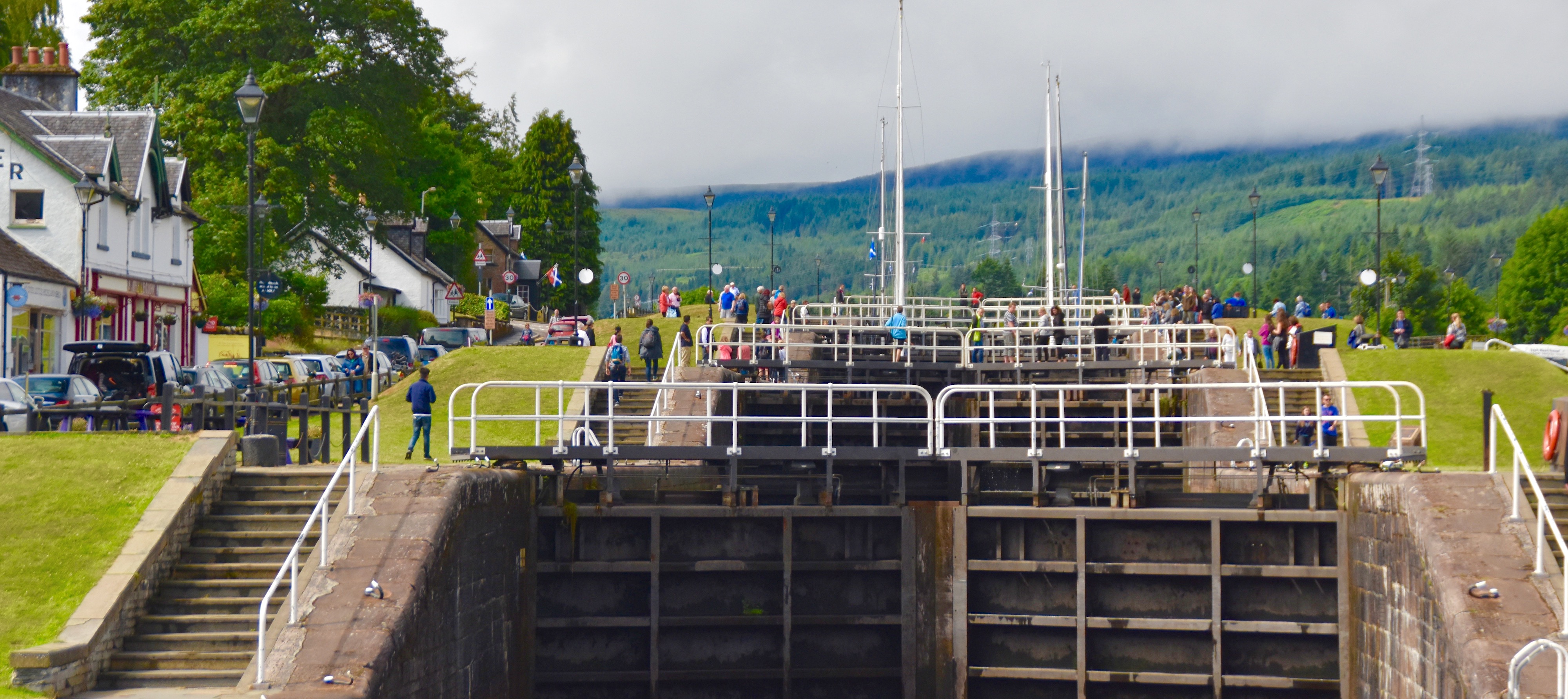
Eilean Donan Castle
After a late lunch we boarded the bus to head away from Loch Ness on the A87 to Loch Duich and another castle at least as famous as Urquhart, Eilean Donan. Literally, ‘Island of Donan’, an early Irish saint who is believed to have set up a cell on this tiny island that sits in a critical location on the Kyle of Lochalsh, Eilean Donan is today one of the most visited castles in Great Britain. Which is kind of strange because what you visit today dates only from the 1920’s and 1930’s. This is what it looked like before then.
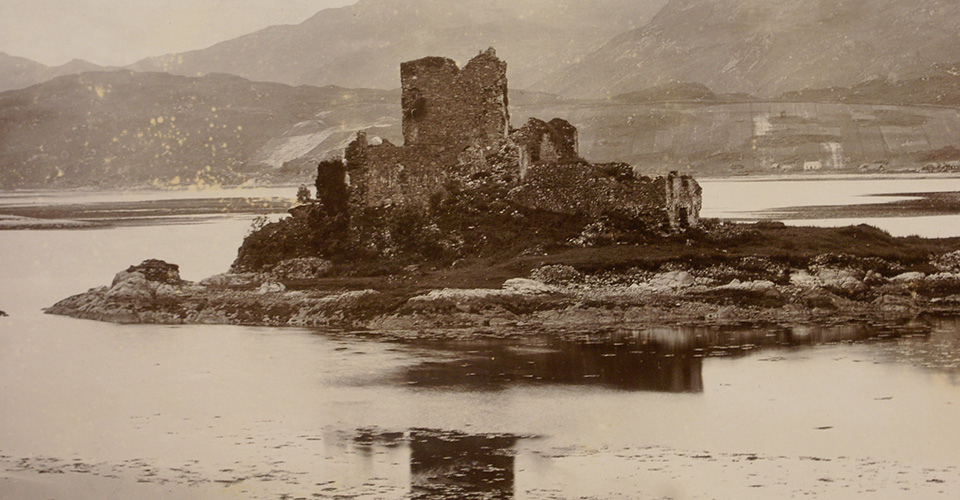
There had been a castle here since the 13th century, but once again thanks to our Jacobite friends it ended up being destroyed in 1719 when they invited the Spanish to take possession of it. The Spanish never seem to have learned that the English did not take kindly to intrusions upon what they viewed as British soil. So after ousting the Spanish soldiers in residence they used the stockpile of gunpowder on hand to blow the place up.
In 1911, Lt. Colonel John Macrae-Gilstrap bought it and this is what it looks like today.
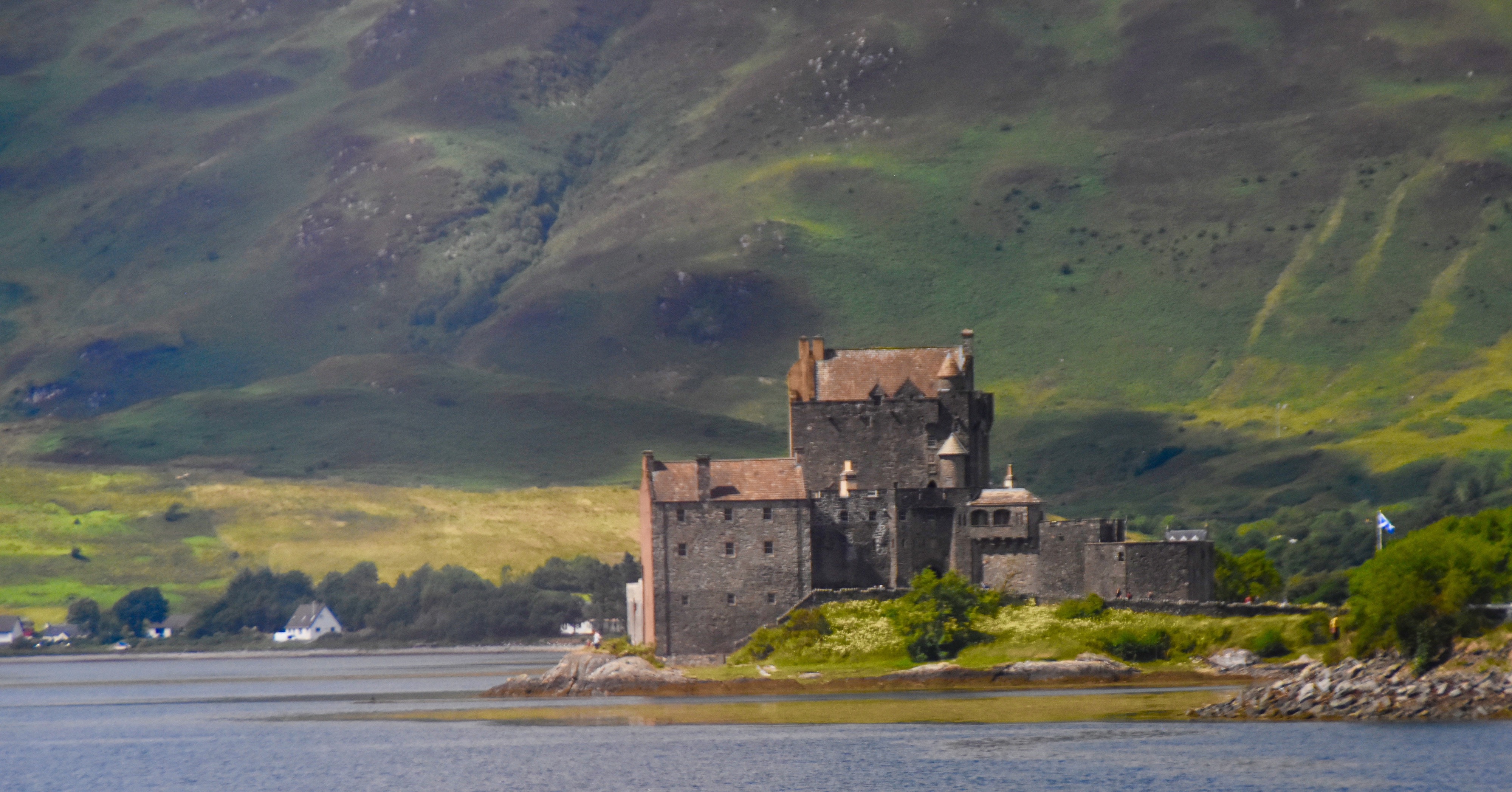
After parking on the mainland and paying the entrance fee you cross the stone bridge on right.
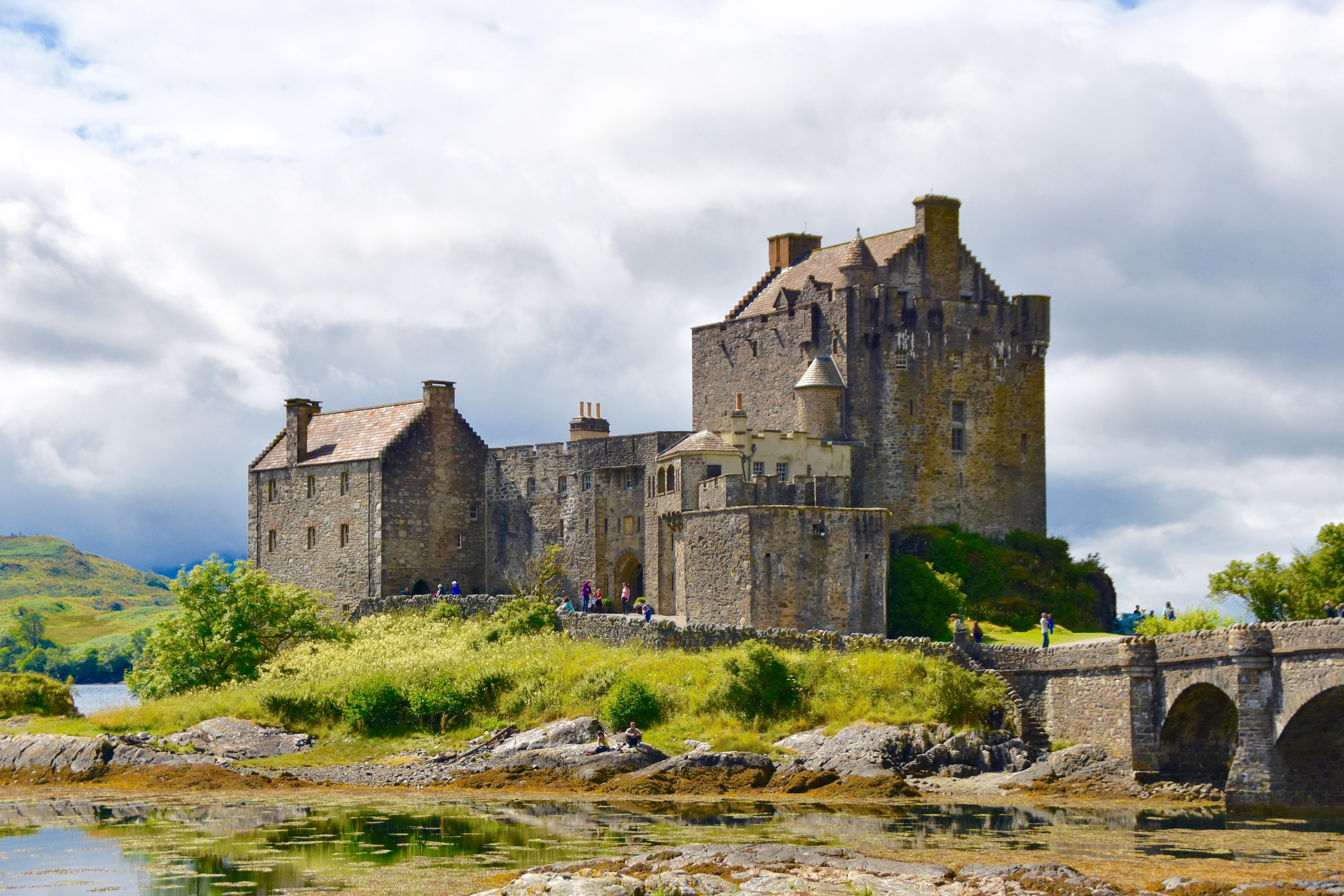
It truly is a magnificent sight, mostly I think because of its location on this tiny island, which begs for a photograph to prove you were there.
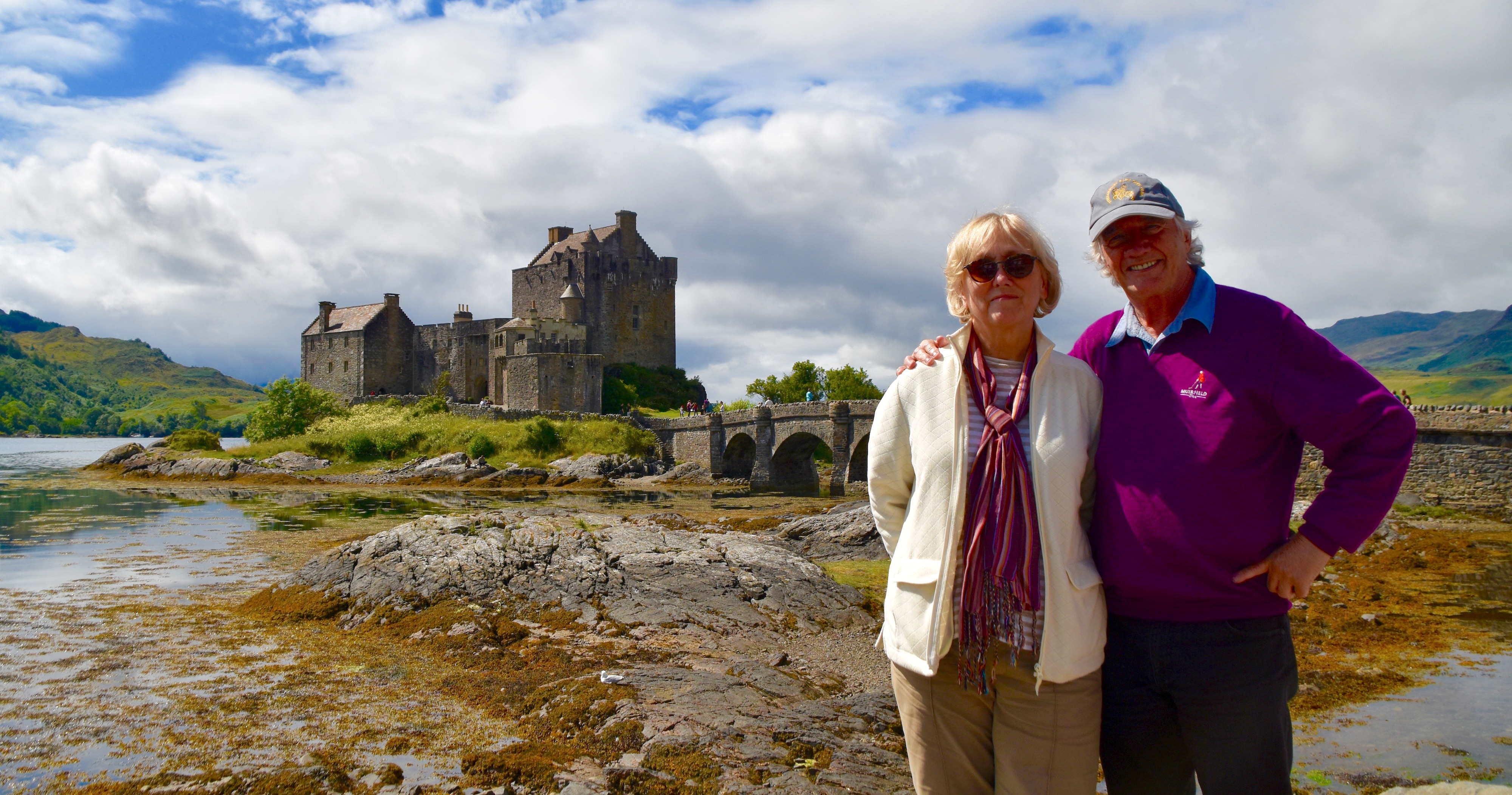
For reasons I can never really comprehend Eilean Donan, like Scone Palace allows no photography inside whatsoever. This deprives them of the tremendous exposure they would get on sites like TripAdvisor and Trivago, but judging from the number of people here today, they probably don’t need it. Suffice it to say that the interior does not match the exterior in terms of interest. It is still a private home and you almost feel like a voyeur once inside.
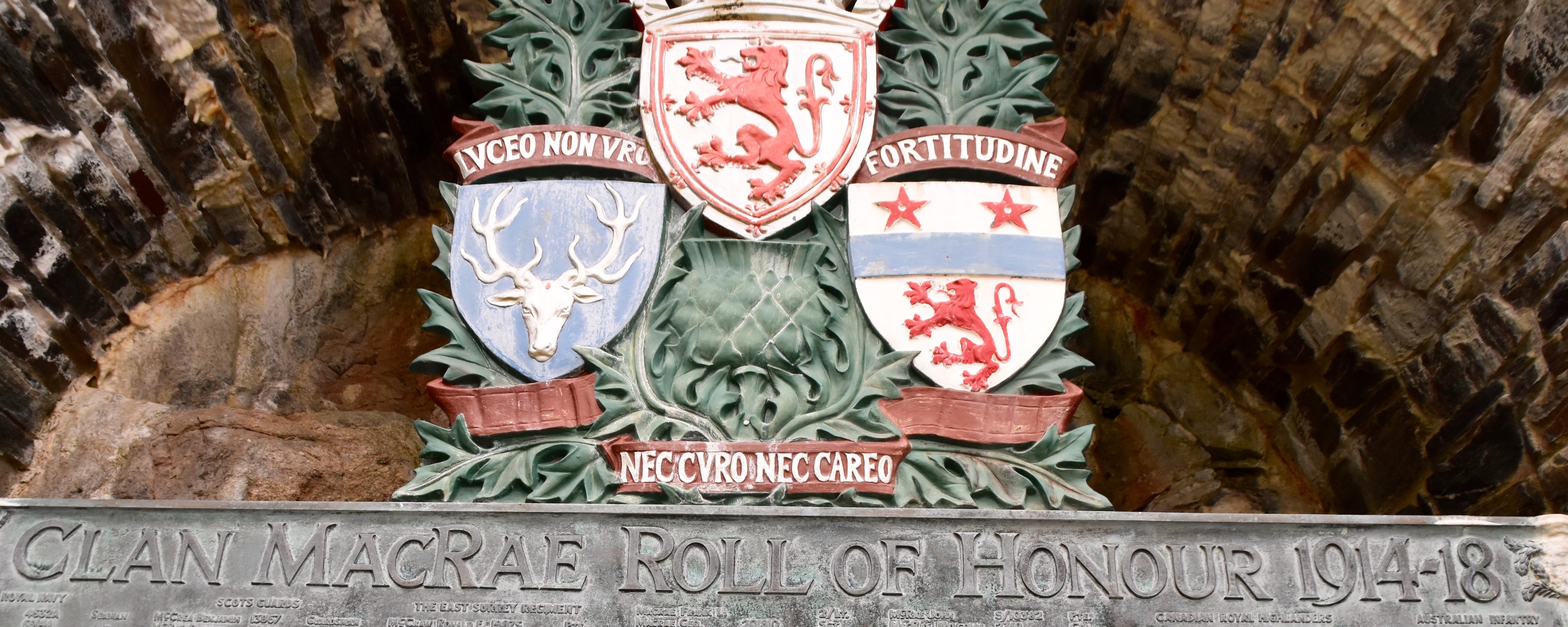
Outside again, I came across the Clan Macrae Roll of Honour naming all of the Macrae’s who died in WWI, the most famous of which was a Canadian, Lt. Colonel John MacRae who wrote In Flander’s Fields. The horror of that most stupid of all human conflicts was brought home to me by just searching for Nova Scotians named MacRae who died in that war.
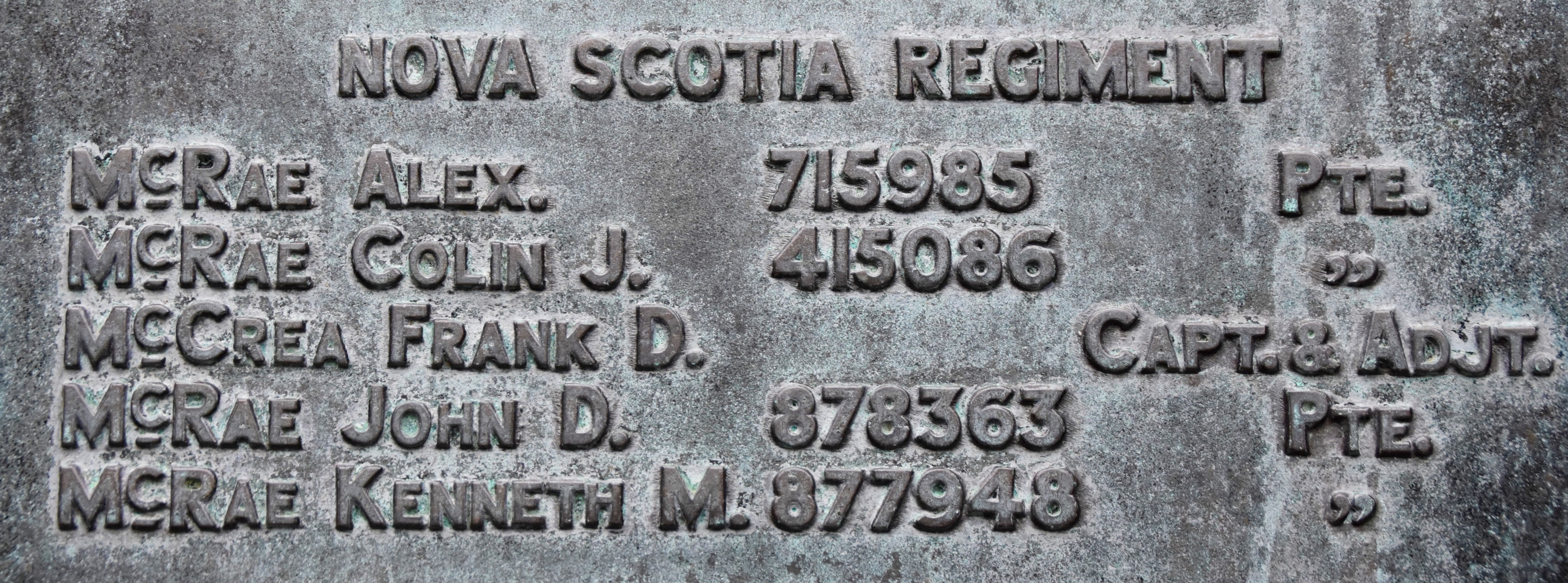
Here are their details – Alexander McRae, killed on Christmas Day, 1916, a native of Medford, Massachusetts serving in the 25th Battalion of the Canadian Infantry, buried in Tranchee de Mecknes Cemetery near Arras, France. Collin (not Colin) J. McRae, killed at Ypres, Belgium April 14, 1916, a native of Lake Ainslie, Nova Scotia and memorialized on the Menin Gate in Ypres, also in the 25th Battalion of the Canadian Infantry. Capt.Francis Dobree McCrea, killed September 28, 1918 and apparently a native of Jamaica serving with the Royal Canadian Regiment, buried in Crest Cemetery near Cambrai, France. John D. McRae, killed August 28, 1918, a native of The Points, West Bay, Nova Scotia and another member of the 25th Battalion, buried in Wancourt British Cemetery near Calais, France. Kenneth M. McRae, killed at Ypres on November 8, 1917 and memorialized on the Menin Gate, also a member of the 25th Battalion – no record of his parents or home town. The two on the Menin Gate means their bodies were never found, aka blown to pieces or buried under the earth from a shell burst.
Although the plaque is not strictly accurate by including an American and a Jamaican, it does bring home the sacrifice that every member of any clan made in that stupidly named War to End All Wars. If only.
After our visit to Eilean Donan we retraced our way back to Inverness to end one of the busiest days of the tour. Next were off to Glencoe where my clan, the Campbells, were up to no good. Join us.

